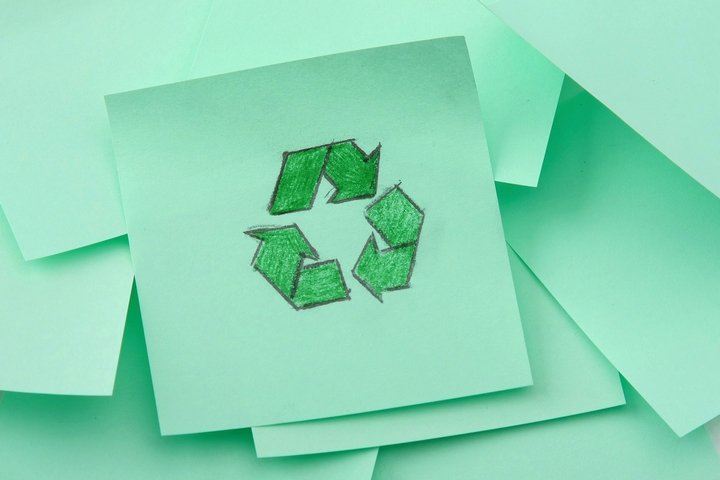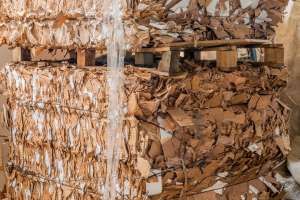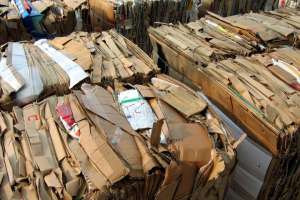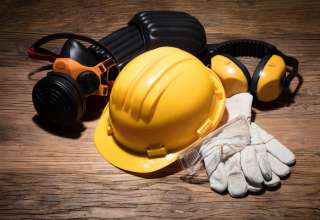
Globally, more than 400,000,000 metric tons of cardboard and paper are generated every year. Half of these come from the US, Japan, and China. For instance, in 2016 alone, Americans used seventy million metric tons of paper. That’s about 514 pounds of paper for every American!
Among sources of waste paper include discarded paper such as newspapers, cardboard, packaging papers, white printer paper, magazines, and paper mill scraps. Paper recycling helps protect the environment and save trees. Most of the paper we throw away can be recycled and reused.
The reality is that we only need 20% new paper; the rest of our paper needs can be met by 80% recycled paper. This means 80% of trees cut down to manufacture paper can be saved, giving us cleaner air to breathe and beautiful landscapes to behold. Instead of cutting down more trees to manufacture paper, recycling is a great option that also conserves the environment.
Below are ten elements of the paper recycling process:
1. Collect the Paper
The paper recycling process starts with its collection. Individuals in offices, universities, homes, and manufacturing industries collect waste paper and store it in bins. The collected waste paper is at this stage yet to be sorted. It may include small pieces of metals, plastics, and food stains, among other contaminants.
2. Sort the Paper
You can sort the paper either at home or at the recycling plant. The goal of sorting is to get rid of contaminants such as metal, plastic, or other inappropriate waste. Pieces of paper with food stains should also be removed at this stage.
This stage of the paper recycling process is critical. Proper sorting means that only the appropriate paper materials are allowed into the next phase of the recycling process.
3. Transport the Paper
 After sorting, the paper is tightly packed and transported to a warehouse where it’s stored. From the warehouse, the paper waste is later transferred to a pulper. The earlier stage is critical since improper sorting would mean more work down the processing line and higher transportation costs.
After sorting, the paper is tightly packed and transported to a warehouse where it’s stored. From the warehouse, the paper waste is later transferred to a pulper. The earlier stage is critical since improper sorting would mean more work down the processing line and higher transportation costs.
4. Pulp It
The pulper is a large container that contains a solution of water and chemicals. Once the paper is shredded into small pieces, it’s heated in the vat where the cellulose fibres are mashed into mush. It’s this slimy content that marks the start of the final journey towards the recycled paper.
5. Screen the Pulp
The next stage of the paper recycling process is all about screening the mushy pulp. This involves forcing the pulp through screens featuring different sizes and shapes of slots and holes.
6. Clean the Pulp
 At this stage, there may still be some remaining contaminants in the pulp. After the pulp has been screened, it’s further washed by spinning the mushy pulp. At this stage, heavy objects that escaped the sorting stage, such as plastic pins, staples, and paper clips are removed from the vats. Other light particles that gather at the centre of the cylindrical container are also safely extracted.
At this stage, there may still be some remaining contaminants in the pulp. After the pulp has been screened, it’s further washed by spinning the mushy pulp. At this stage, heavy objects that escaped the sorting stage, such as plastic pins, staples, and paper clips are removed from the vats. Other light particles that gather at the centre of the cylindrical container are also safely extracted.
7. De-ink the Pulp
Depending on the paper, the pulp could be subjected to a de-inking process. This involves removing adhesives, glue residues and ink from the paper. The aim is to make sure the pulp has no contaminants that could lower the quality of the recycled paper.
8. Wash the Pulp
The process of de-inking the pulp includes two stages. The first is the washing stage, where the pulp is rinsed with water to get rid of the ink particles. However, this stage can’t get rid of larger and sticky particles. This brings us to the second de-inking stage: floatation. The pulp is inserted into a floatation vat where chemicals (surfactants) and air are added.
Ink and other particles float to the surface after attaching themselves to air particles. They are then easily removed and disposed of as scum.
9. Bleach the Pulp
 At this stage of the paper recycling process, the pulp is further treated to separate the mush from the colour particles. If the aim is to manufacture white paper, oxygen, chlorine dioxide, or hydrogen peroxide are added to bleach the paper. If the goal is to make cardboard, the pulp is not bleached.
At this stage of the paper recycling process, the pulp is further treated to separate the mush from the colour particles. If the aim is to manufacture white paper, oxygen, chlorine dioxide, or hydrogen peroxide are added to bleach the paper. If the goal is to make cardboard, the pulp is not bleached.
10. Roll the Paper Sheets
This final stage of the paper recycling process involves spraying the pulp onto wire screens. As a result, water is drained as the pulp bonds to form recycled fibres that appear like a watery paper sheet. The sheet is then pressed through several press rollers to drain any remaining water completely.
It is then passed through heated metal rollers to dry further. Later, it’s wound into a huge giant roll. A role can weigh up to 20 tons and could be as much as 30 feet wide. At this stage, your recycled paper is ready to be used.
While paper waste is easy to recycle, it gets to a point where it can’t be recycled anymore. This is because the fibres grow short with each recycle.










